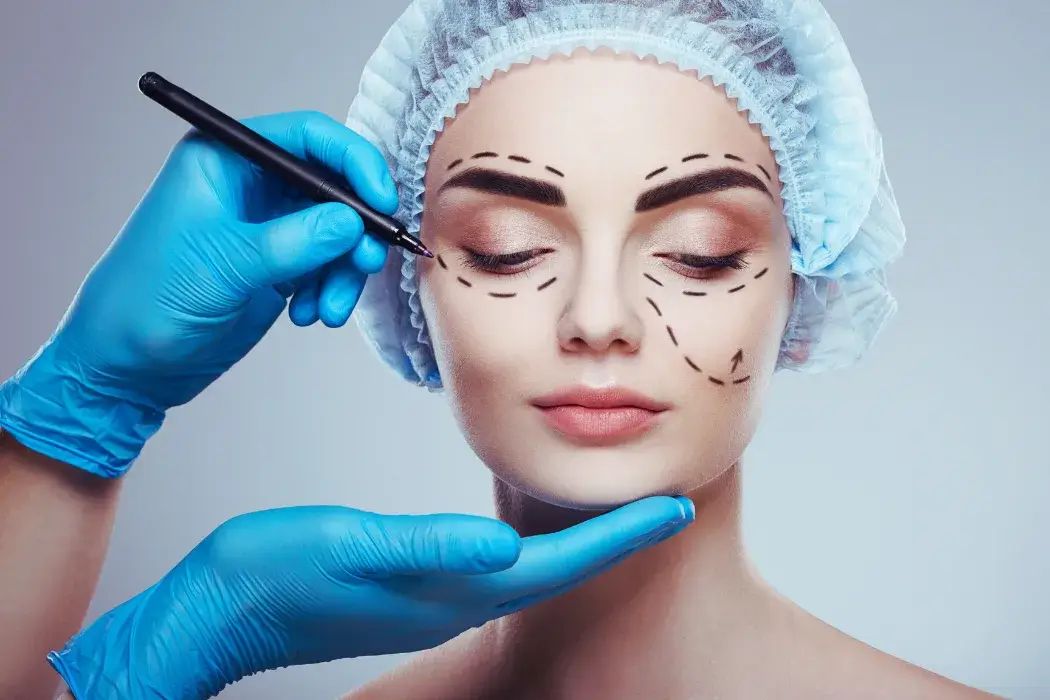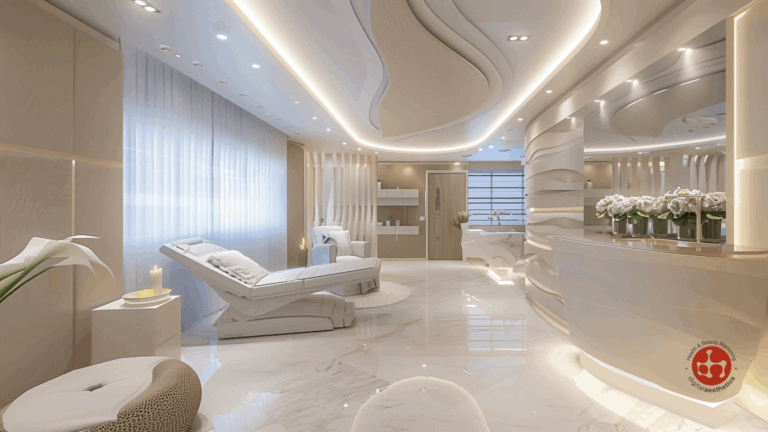Digital Aesthetics weighs in on the facts and the motivations that convince patients that the beauty market, specifically clinics offering cosmetic/aesthetic medicine, is worth trying.
A complex interplay of societal, psychological, and cultural factors shapes the motivation to seek beauty treatments and plastic surgery. Social influences, particularly the media and social platforms, often establish beauty ideals that create pressure to conform. These platforms amplify the visibility of “perfect” appearances, pushing individuals toward cosmetic enhancements to align with these standards.
Psychologically, self-esteem plays a significant role. People dissatisfied with their appearance may seek beauty treatments or surgery to improve their confidence and self-image. For some, these interventions act as a solution to personal insecurities or a means to overcome social anxiety linked to perceived physical flaws.
Cultural values also influence beauty ideals. In certain societies, physical appearance is closely tied to success, youth, or social standing, encouraging people to invest in cosmetic enhancements. Technological advancements and the accessibility of non-invasive procedures further lower barriers, making these treatments more appealing.
A Focus on Safety & Realistic Outcomes
A recent study published in the Aesthetic Surgery Journal sheds light on what drives patients’ interest in cosmetic surgery and the factors influencing their choice of surgeon. The study, conducted by a team of researchers led by Dr. Charles Galanis, offers valuable insights for practitioners and patients navigating the dynamic field of aesthetic medicine.
The study surveyed 96 individuals, including 15 men and 81 women, with a median age of 34.5 years. While 20% of respondents reported actively considering plastic surgery, a striking 78% stated they would consider it in the future. Procedures targeting the face emerged as the most sought-after among those interested.
One barrier to pursuing cosmetic surgery stood out: the most commonly cited concern was the fear of a poor result. This highlights the need for practitioners to emphasize safety and realistic outcomes during consultations.
The research delved into what patients prioritize when choosing a plastic surgeon. Reputation and board certification ranked the most critical factors, underscoring the importance of expertise and trustworthiness. Conversely, advertising quality and surgeon age were deemed the least important.
Interestingly, 60% of respondents preferred private surgicenter-based practices over hospital settings, potentially signalling a desire for personalized care and convenience.
The findings offer a roadmap for surgeons to align their practices with patient expectations. Highlighting certifications, maintaining a strong reputation, and fostering transparency about potential outcomes can help alleviate patient concerns and build trust.
Surprising Motivations Follow the Need for Beauty
Another study published in JAMA Dermatology explores the motivations behind patients seeking minimally invasive cosmetic procedures, shedding light on the psychological, social, and physical factors that influence these decisions. The multicenter observational study, conducted at 13 dermatology practice sites across the U.S., involved 511 adult patients and aimed to identify the main drivers behind their desire for cosmetic treatments.
The study’s results challenge traditional views, suggesting that patient motivations are multifaceted. Many individuals seek treatments to enhance their appearance and improve their emotional well-being, social comfort, and physical health. Most participants were women (86%), with a majority aged 45 or older and having some form of higher education. Over half had previously undergone at least two cosmetic procedures, indicating familiarity and comfort with such treatments.
Physical, Psychological & Social Goals
While physical appearance remained a primary motivation, the study revealed that many patients pursued cosmetic procedures for reasons beyond vanity.
A significant portion (53%) of respondents reported that their decision was motivated to protect their health, such as preventing the worsening of certain skin conditions or symptoms. Furthermore, 69% sought procedures to improve their psychological well-being, hoping to feel more confident or happy or to improve their overall quality of life.
Many also cited the goal of boosting their social confidence, with 57% expressing a desire to feel more comfortable in social settings.
Interestingly, these motivations were largely self-driven, with patients often deciding to undergo procedures independently rather than being influenced by others. Only a small percentage (14%) reported that cost and convenience played a significant role in their decision-making. Additionally, the study found that younger patients (under 45) were more likely to pursue cosmetic treatments to prevent signs of ageing, while older patients focused on maintaining or restoring their appearance.
Psychological Factors & Specific Procedures
Psychological and emotional factors were particularly important for those seeking specific procedures. For example, body contouring, acne scar treatments, and tattoo removals were often linked to emotional motivations, with patients looking to enhance self-esteem or address lingering psychological issues associated with their appearance.
Around 85% of those seeking acne scar treatments and tattoo removal, for instance, cited emotional reasons as key motivators.
The desire to look professional was another common theme, with over half of respondents (55%) considering cosmetic procedures to enhance their professional image. This reflects the growing recognition of appearance’s role in personal and professional success in modern society.
What is the Impact of Social & Cultural Factors?
The study also suggests that societal attitudes toward cosmetic procedures have evolved. With increasing social awareness and acceptance of aesthetic treatments, many patients no longer view cosmetic procedures as acts of vanity but as personal choices that can enhance well-being. The findings emphasize the need for healthcare providers to understand better these motivations to offer more personalised care and set realistic patient expectations.
This study of 511 patients provides a deeper understanding of the complex factors driving individuals to seek cosmetic procedures.
Beyond aesthetic enhancement, many patients are motivated to improve their health, psychological well-being, and social comfort. The findings suggest that patients’ motivations are driven more by personal goals than external pressures and underscore the importance of a holistic approach to cosmetic care that considers physical and emotional needs.
As minimally invasive cosmetic procedures continue to rise in popularity, the study highlights the importance of physicians recognizing the multifaceted nature of patient motivations. By doing so, they can better support patients in achieving their desired outcomes while ensuring that expectations are managed appropriately. This research lays the groundwork for further exploration into cosmetic treatments’ emotional and psychological effects and their potential impact on quality of life.
They’re Always a Patient (and Never Just a Customer)
In the ever-shifting universe of aesthetic medicine, it is easy to forget that patients are not simply clients purchasing a service, like someone getting a haircut or a facial.
Whether undergoing a cosmetic procedure, be it invasive or non-invasive, medical or aesthetic, the foundation of the physician-patient relationship should not stray too far from the principles of general medicine.
These procedures, regardless of their cosmetic nature, are medical interventions. The core of the physician’s responsibility remains to ensure informed consent is obtained, the risks and benefits are clearly understood, and patients have realistic expectations before treatment. While the complexity of a procedure might affect the level of detail in pre- and post-treatment instructions, the office should always be available for follow-ups and questions. Trust between patients and their physicians is paramount in building an effective therapeutic relationship.
Dealing with Fears & Misinformation
The modern language surrounding healthcare has changed significantly over the past two decades. With the rise of healthcare maintenance organizations, the terms “healthcare providers” and “consumers” have replaced “physician” and “patient,” which reflects the economic dynamics of the healthcare system.
However, these terms fail to capture the doctor-patient relationship’s deeply personal and human nature. When someone enters a physician’s office for treatment, whether for a serious medical condition or a cosmetic procedure, the connection should be far more meaningful than a simple transaction.
Aesthetic medicine requires a delicate balance of education, trust, and empathy. Patients seeking aesthetic procedures often seek solutions to complex appearance issues that may stem from insecurities or societal pressures.
This means the doctor must be more than a technician. They must be a guide, a counsellor, and a medical expert. However, many potential patients come in with unrealistic expectations. For example, a patient may seek a solution for wrinkles but expect to look decades younger after a single session. The physician’s role is to manage such expectations while providing education and clarity.
Furthermore, aesthetic procedures are often influenced by societal trends and misinformation. Patients frequently come into consultations armed with information, some of which may be incorrect or influenced by sensationalized media portrayals of cosmetic treatments. It is crucial to help them navigate these misconceptions.
Addressing these fears requires addressing the science of each procedure, validating their emotions, and providing reassurance. Engaging in open dialogue about their concerns, fears, and misconceptions is key to creating a relationship where they feel respected, heard, and understood.
Establishing Better Patient Relations
The ideal patient-physician relationship in aesthetic medicine should prioritize open communication, trust, and mutual respect. Building these elements begins with honesty, particularly when managing expectations.
Patients may not always appreciate hearing the truth, especially when it contradicts their desires. However, in the long run, they will value transparency. For instance, when a patient requests a procedure they don’t need, it may be more ethical to advise against it, even though it means forgoing immediate profit. Although this type of honesty may cost in the short term, it often leads to stronger, long-term relationships built on trust and mutual respect.
A patient may come in asking for Botox or fillers when they do not yet need them or seeking a complex surgical intervention when simpler non-invasive treatments might suffice. In these cases, offering advice that aligns with the patient’s best interests may not immediately increase revenue but will certainly increase patient satisfaction and retention.
For example, advising a 28-year-old woman with smooth, youthful skin that she does not yet need Botox may cost the physician the opportunity for a procedure that day, but it fosters trust. Patients appreciate being treated as individuals rather than being “sold” a service, and this trust often leads to loyalty and referrals.
The same approach applies when dealing with patients whose needs might extend beyond the noninvasive procedures available at the clinic. If a patient’s condition may require surgery, it is important to recommend an initial consultation with a surgeon or, at the very least, make them aware of the limitations of nonsurgical treatments. This level of honesty is ethical, helps manage the patient’s expectations, and ensures that they make informed decisions based on a clear understanding of what each treatment entails.
The Need for a Clear Aesthetic Vision
A clear aesthetic vision from the physician is crucial in establishing a solid relationship with patients. They are more likely to trust a doctor with a distinct, natural approach to aesthetics and whose personal values align with theirs.
Understanding a patient’s goals and advising them on the best way to achieve them builds rapport. This trust can also be nurtured through education. Patients who understand the “why” and “how” behind the treatments they are receiving are more likely to feel confident and comfortable with the process.
Aesthetic medicine should never be a one-size-fits-all approach. Each patient brings their own set of expectations, beliefs, and desires to the table. A doctor’s role is to listen attentively, assess each patient’s individual needs, and provide them with a tailored treatment plan. As a physician, it’s important to establish a sense of partnership with the patient, working together to achieve a shared goal. This collaborative approach is essential for both the physician’s and patient’s satisfaction, as it promotes an ongoing relationship that focuses on long-term success rather than short-term fixes.
One effective way to engage with patients and ensure they are satisfied with their treatments is through consistent follow-up.
Aesthetic procedures, particularly those involving fillers or lasers, may require touch-ups or periodic treatments to maintain results. Keeping the lines of communication open, even after the procedure, demonstrates a commitment to the patient’s ongoing well-being. This approach helps build long-lasting relationships where the patient feels supported and cared for beyond just the procedure.
What About Building & Keeping Patient Trust?
Building patient trust also involves understanding that aesthetic procedures are not always about achieving perfection but helping patients feel more comfortable in their skin. A procedure like Botox, for example, may not erase every wrinkle but can soften their appearance in a way that makes the patient feel more confident.
Similarly, non-invasive treatments like fillers can restore volume to a patient’s face, improving their appearance in subtle yet meaningful ways.
It’s important to remember that the physician-patient relationship in aesthetic medicine is just that a relationship.
It is a partnership that requires attention, empathy, and respect.
Sometimes, it is easy to lose sight of the deeper responsibilities that come with the practice. However, when physicians take the time to establish genuine connections with their patients, they foster loyalty and satisfaction that goes beyond mere cosmetic results.
By fostering trust, honesty, and open communication, medical practitioners can build strong, lasting relationships that contribute to the success of their practice and the well-being of their patients.
A Closer Look at the Role of Empathy in the Medical Field
Empathy is crucial in the medical field, as patients seek emotional understanding from their physicians. Medical educators are becoming more aware of this need, yet there’s a shift in how empathy is defined. Outside of medicine, empathy typically involves emotional resonance, where a person feels and understands another’s emotions. However, medicine often frames empathy as a detached, intellectual understanding. While aiming to preserve objectivity, this definition may miss the vital role that emotional connection plays in truly understanding a patient’s emotional state.
There has always been tension in the physician’s role. Doctors aim to be detached to maintain objectivity, but patients want to feel understood on an emotional level. While medical professionals increasingly recognize the importance of empathy, they often define it as an intellectual acknowledgement of another’s feelings without experiencing them. This view suggests that emotion doesn’t contribute to understanding a patient’s emotions, which contrasts with the idea that emotional resonance is crucial for empathy.
Historically, the medical literature has defined empathy as a purely cognitive skill, separate from sympathy, with emotional involvement considered a threat to objectivity. Physicians were trained to remain neutral and detached from emotions to care for patients effectively. Sir William Osler, a prominent figure in medicine, argued that physicians should neutralize their emotions to understand their patients’ inner lives better. This detachment became a hallmark of medical practice, aiming to separate a physician’s emotions from their clinical observations.
Resonating with Patients
The modern definition of “detached concern” focuses on the idea that physicians should remain emotionally detached when understanding a patient’s emotional state. However, this definition overlooks that empathy involves not just recognizing a patient’s emotional state but resonating with it. This emotional attunement allows physicians to better understand their patients’ experiences and foster a more meaningful connection.
Empathy isn’t about fully experiencing a patient’s emotions but understanding them through emotional resonance. This emotional attunement guides the physician in understanding the factual aspects of a patient’s condition and the emotional weight behind those facts. When a physician is attuned to a patient’s emotions, they can adjust their approach in ways that a purely cognitive approach might miss.
For example, noticing a patient’s nonverbal cues or changes in tone can provide critical information about their emotional state, guiding more effective care.
Emotional Attunement & Patient Outcomes
Empathy is also essential for building trust between patients and physicians. When physicians are emotionally attuned, patients feel heard and understood, making sharing sensitive information easier. This emotional connection can also be therapeutic, helping to reduce anxiety and improve outcomes. Research has shown that empathic communication enhances patient satisfaction and can even improve the physiological outcomes of treatment.
Furthermore, empathy enriches the practice of medicine itself. Physicians who connect emotionally with their patients often find their work more meaningful and less prone to burnout. This emotional engagement reminds them of the deeper significance of their work beyond just the clinical tasks.
Empathy in medicine is not always practical. Emotional responses can be challenging to control, especially for physicians who may not naturally resonate with certain patients. To address this, medical education should encourage curiosity about patients’ lives, helping physicians develop a more empathic approach to care.
Time pressures and emotional barriers often hinder empathy, but research suggests that even brief moments of patient-centred listening can significantly enhance care. By fostering emotional awareness and curiosity, physicians can better address the emotional dimensions of illness and improve patient care.
In conclusion, empathy in medicine is an essential skill beyond cognitive understanding. It involves emotional attunement, where physicians recognize and resonate with a patient’s emotions. This emotional connection leads to better patient outcomes, more meaningful physician-patient relationships, and a more fulfilling medical practice. Despite the challenges, promoting empathy in medical education and practice can enhance the quality of care and the physician’s experience.










